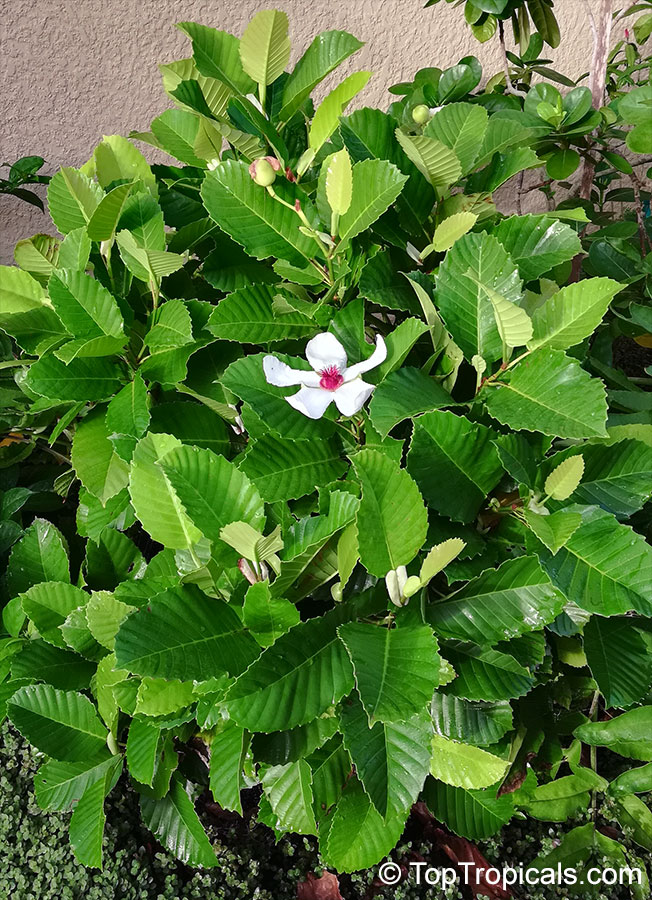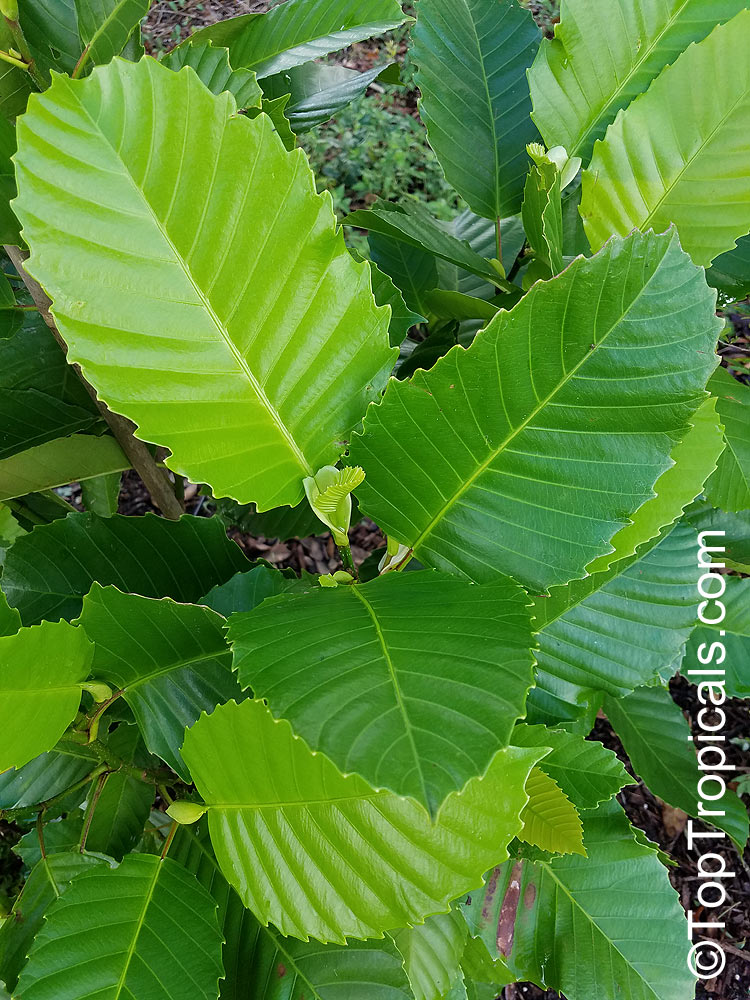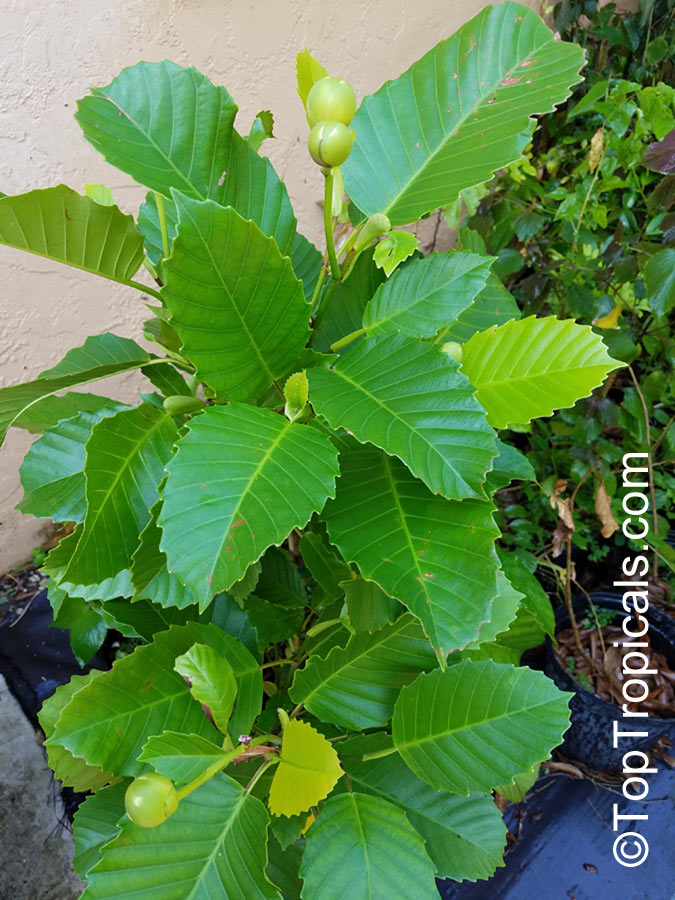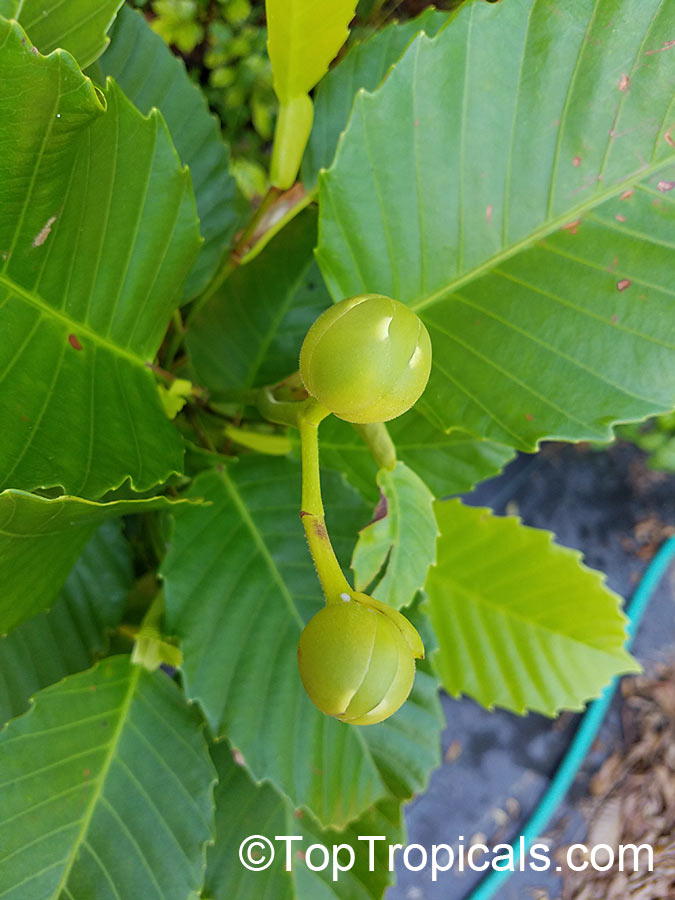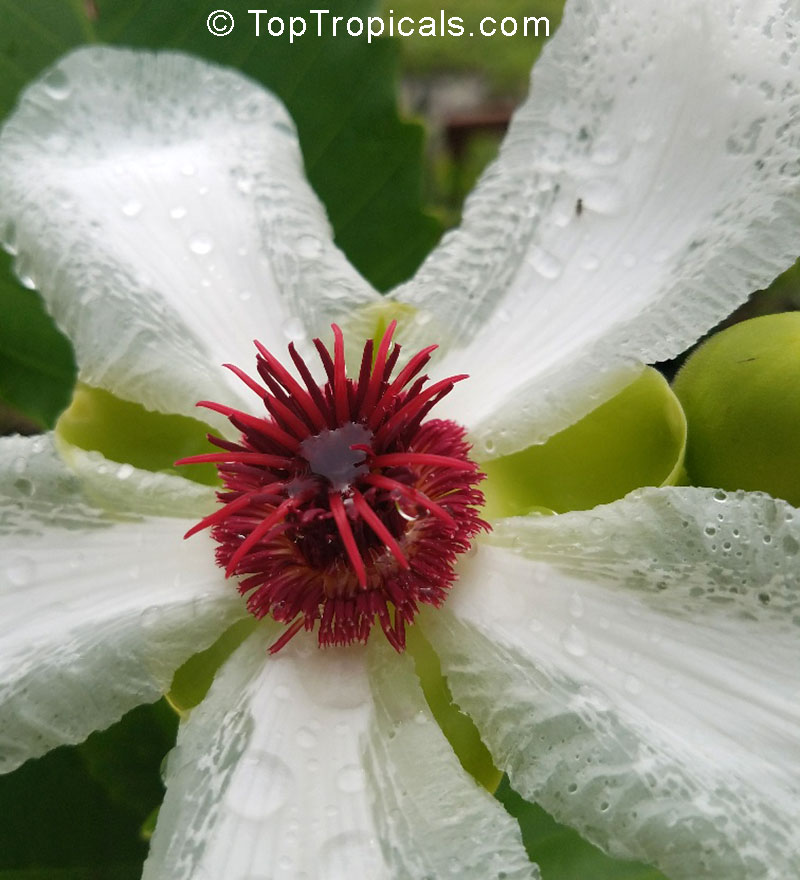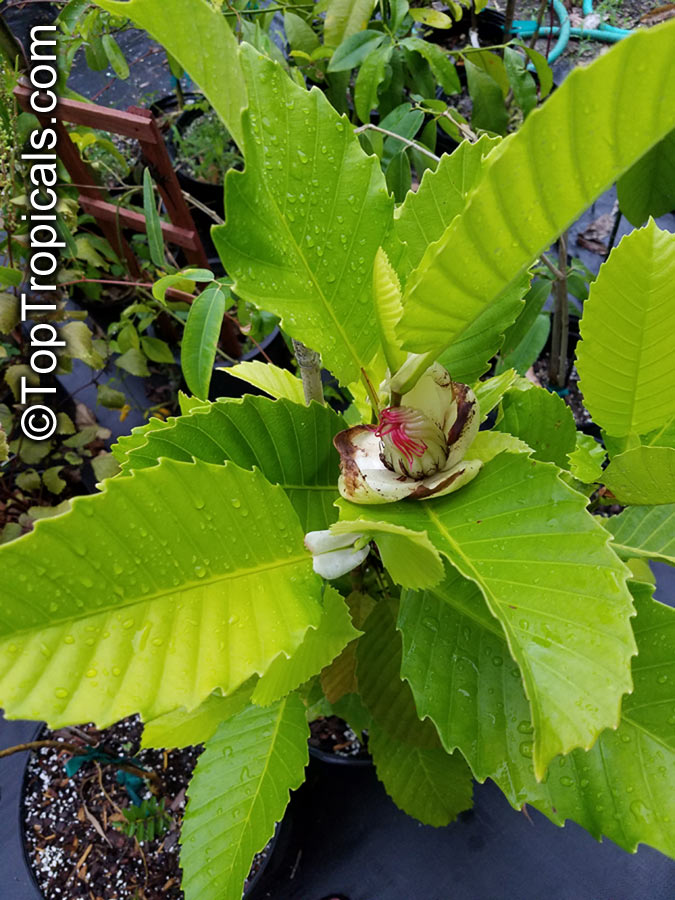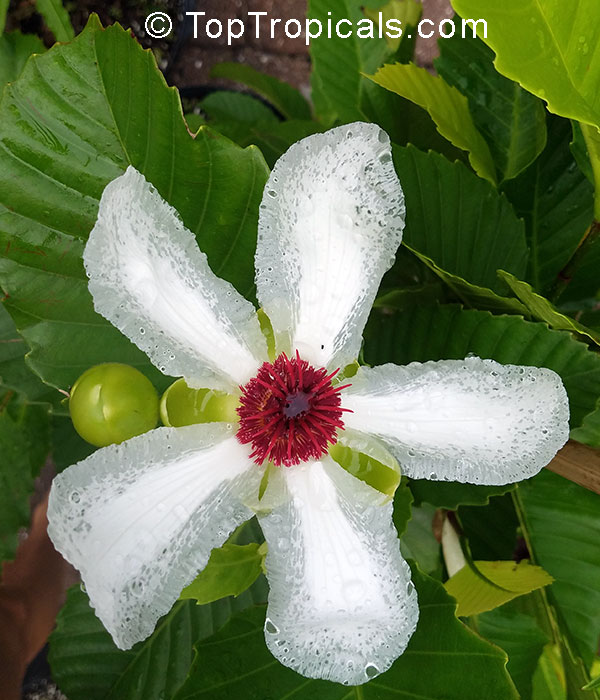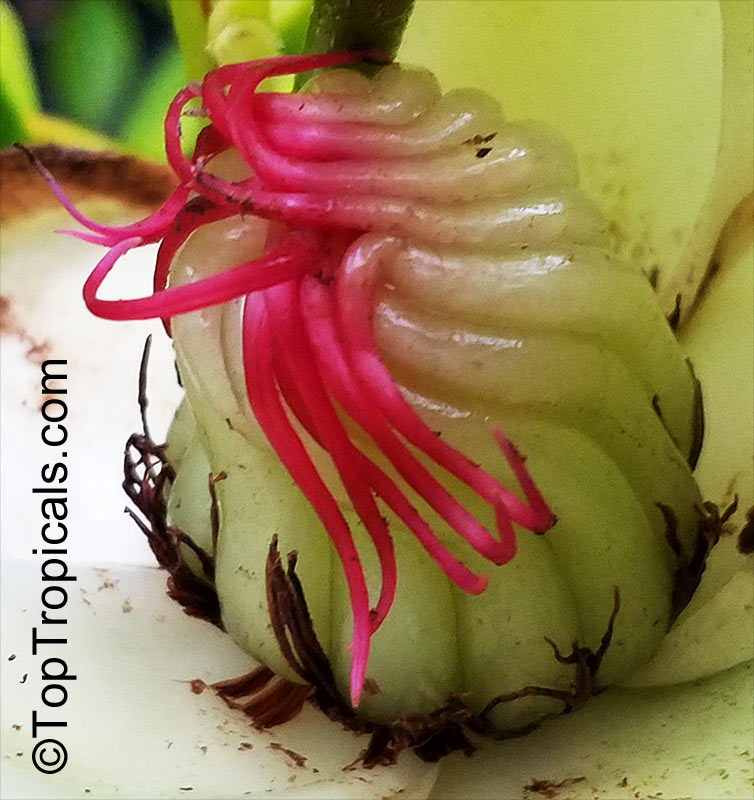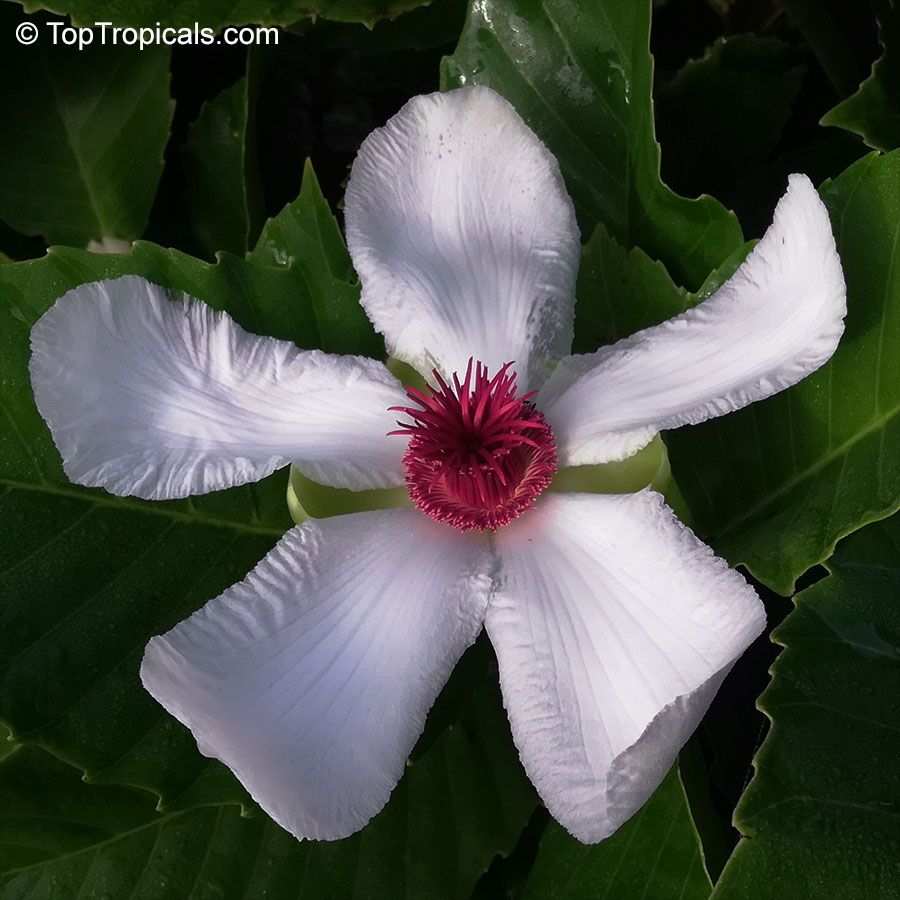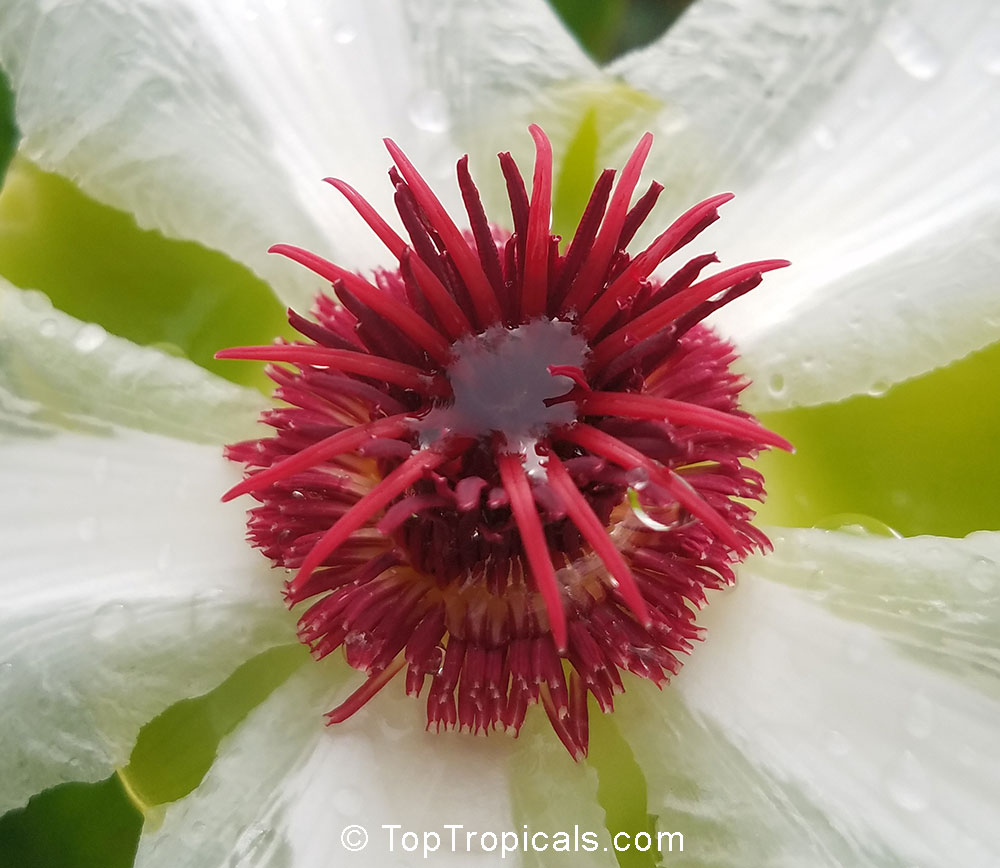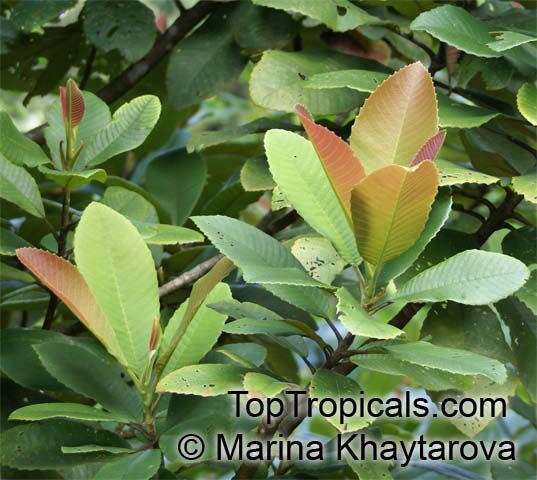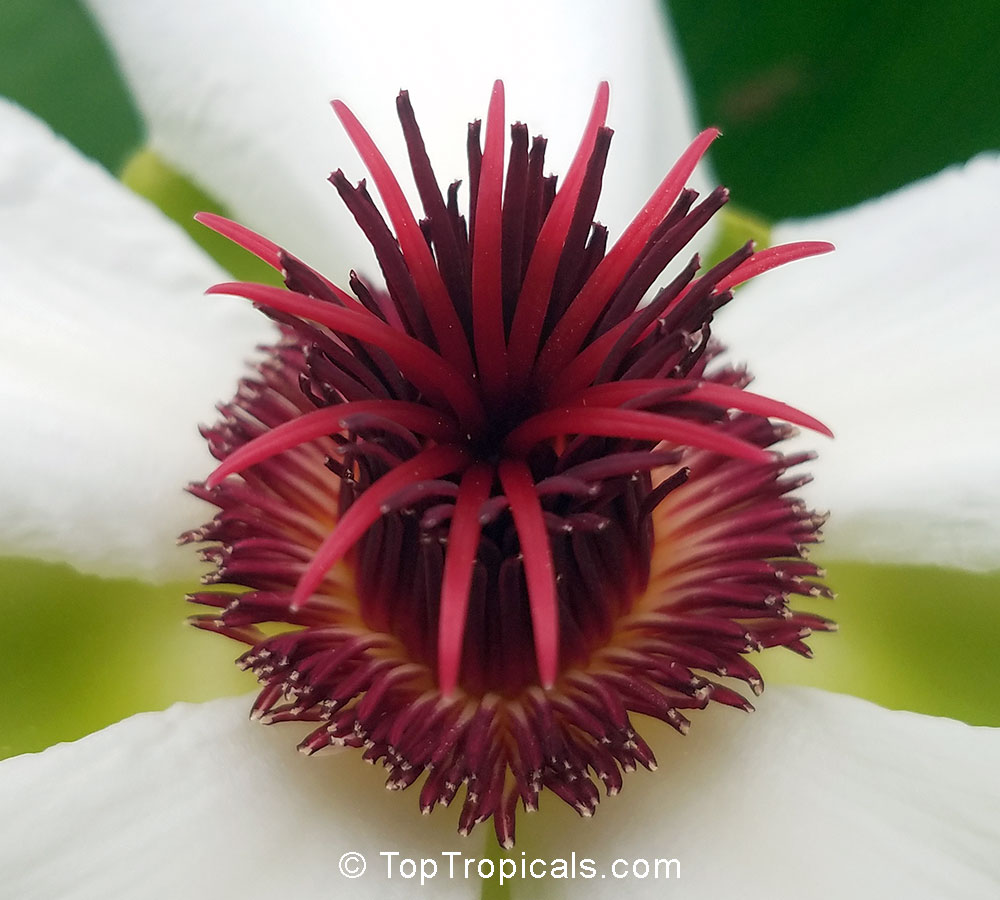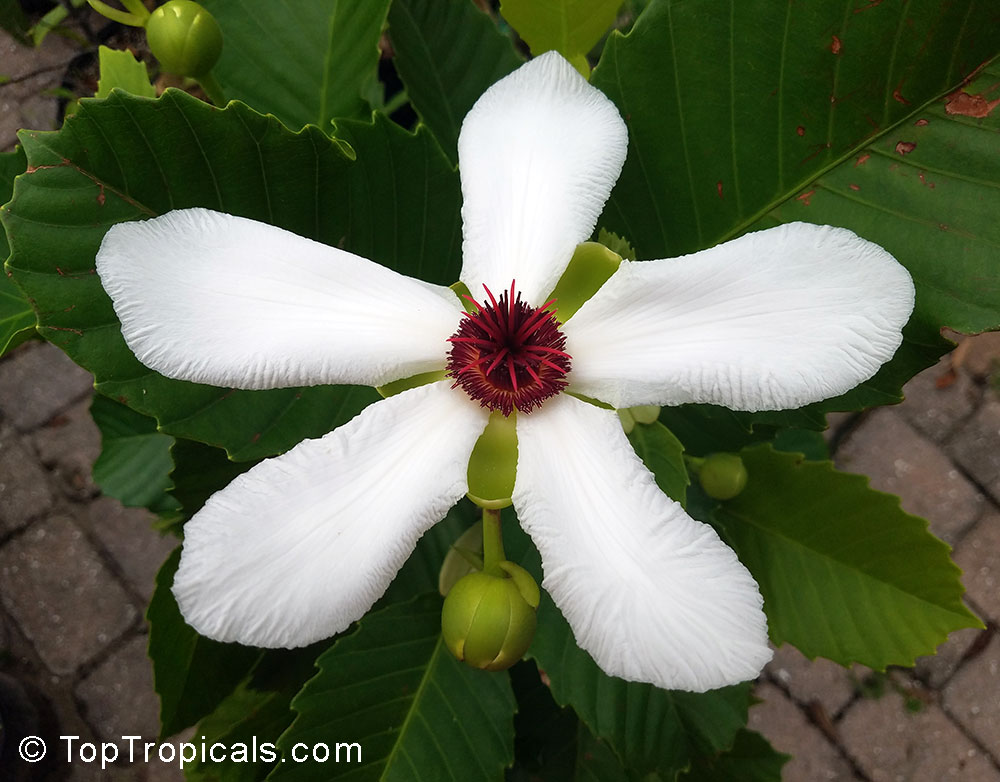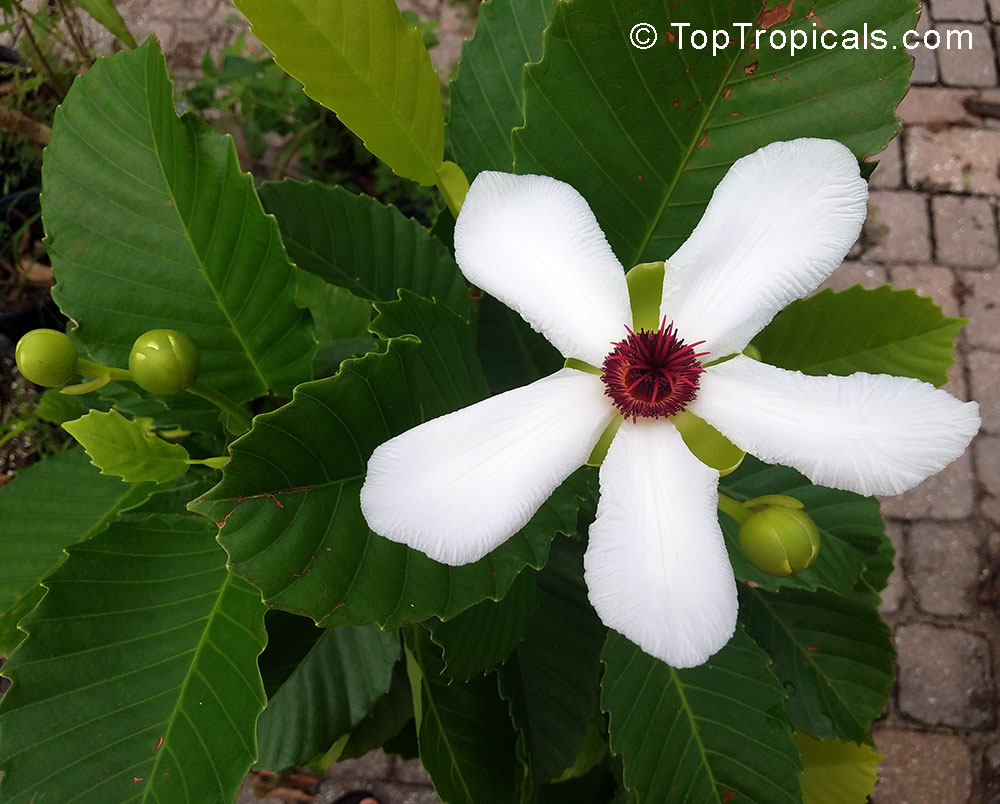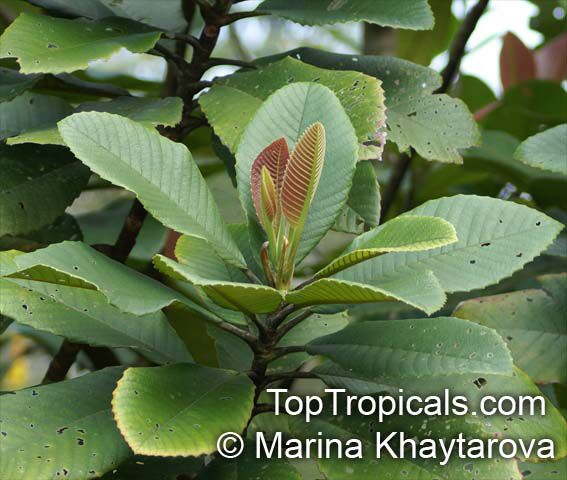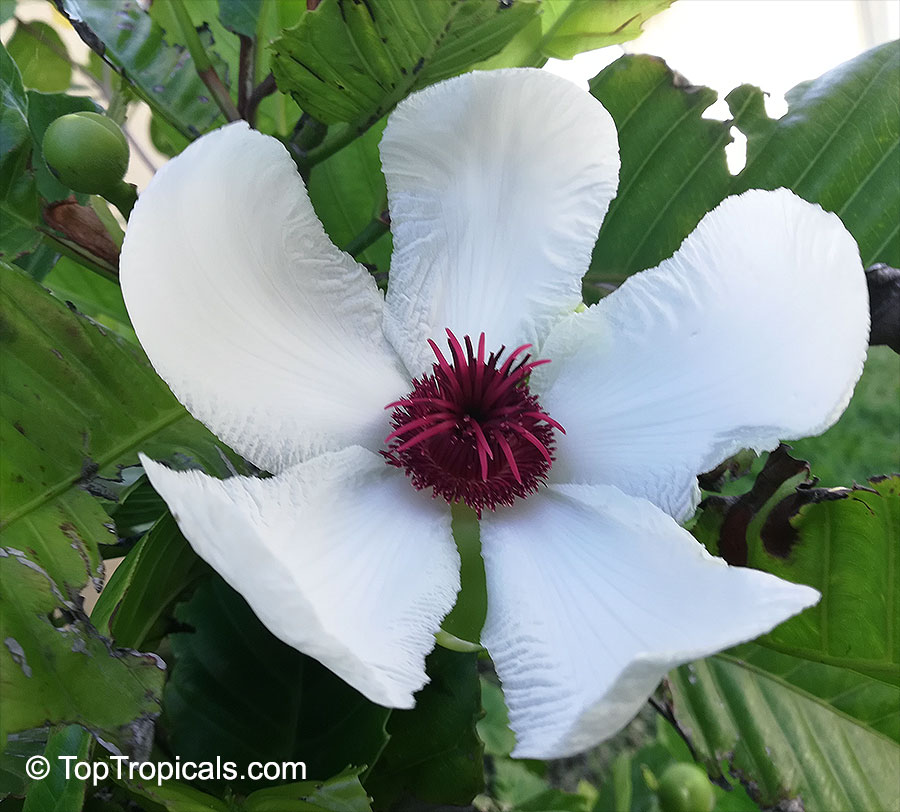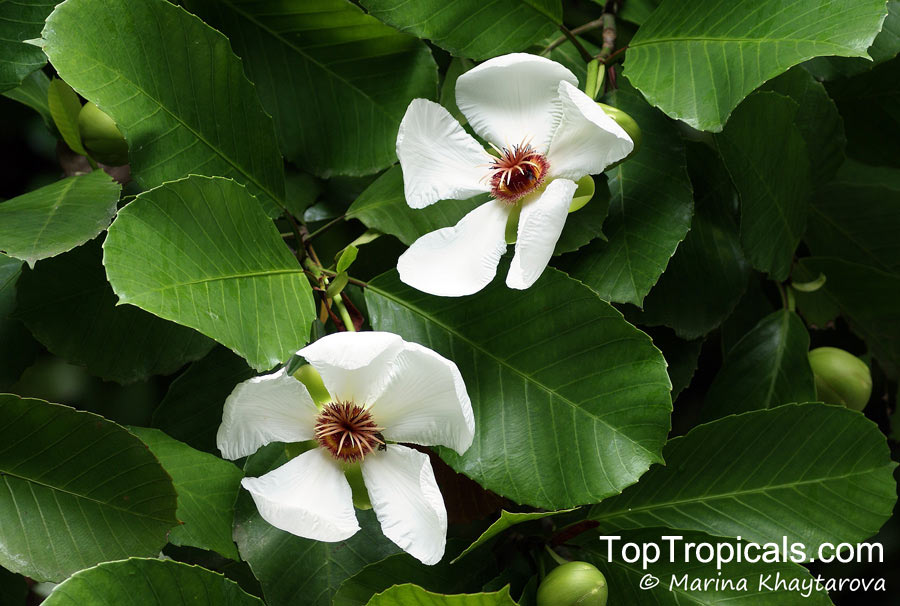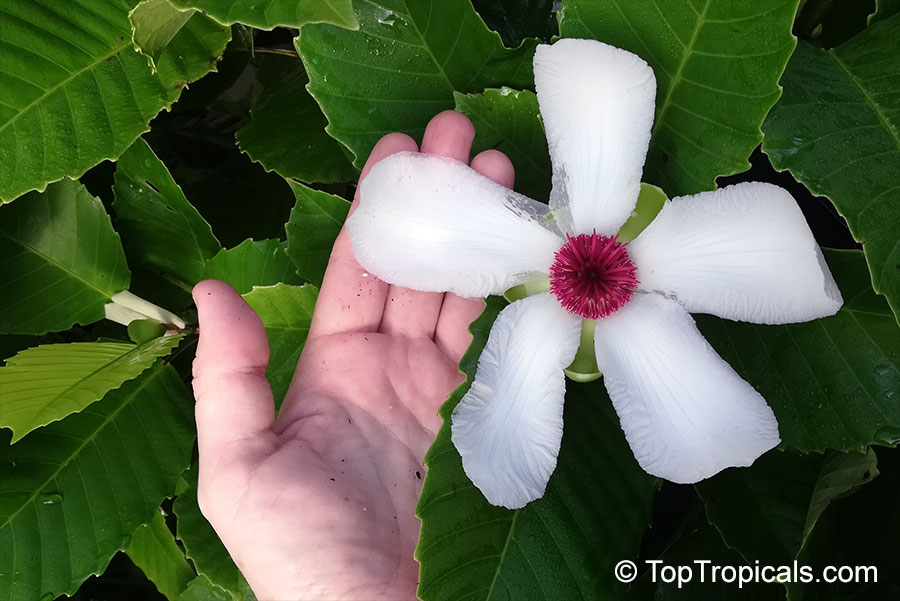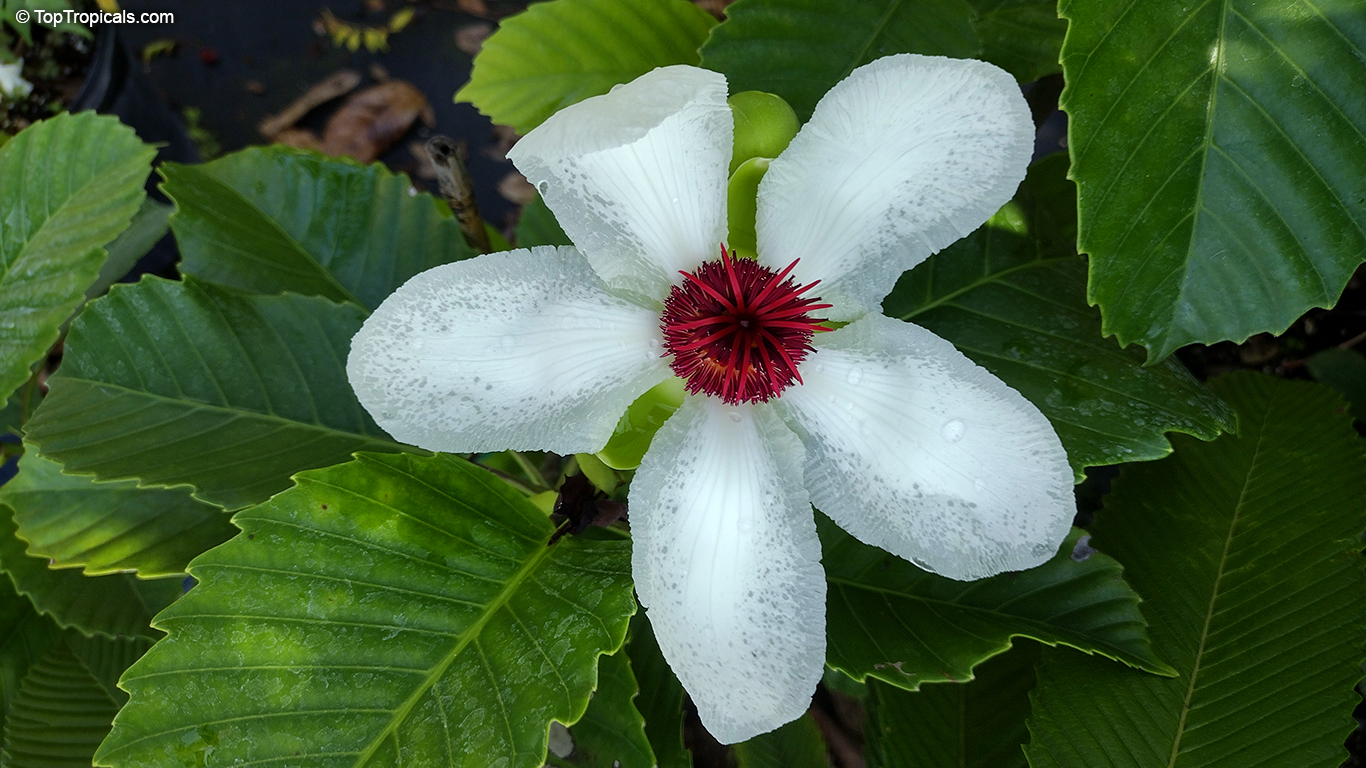Dillenia philippinensis (Katmon)
Top Tropicals Plant Encyclopedia
Botanical name: Dillenia philippinensis
Common names: Katmon, Philippine Elephant Apple, Philippines Simpoh
Family: Dilleniaceae
Origin: Philippines








This tropical looking beauty s a favorite tree among Filipino garden enthusiasts. It is endemic to the Philippines. Its fruit is known as elephant apple. Katmon grows in low to medium altitude forests throughout the Philippines, but does not survive the cold climates of the uplands.
The tree is buttress-forming, evergreen, and shade tolerant. The bark is smooth with shallow fissures. The leaves are large, 1-2 ft long, leathery, shining, and coarsely toothed at the margins. Its flowers are white, large, showy, and also very large, up to 1 ft wide, with showy reddish pistils and stamens. The edible fruits are rounded, 2-3" in diameter, with large fleshy sepals tightly enclosing the true fruit.
Flowers last only one day, but the plant stays in bloom all summer through fall, with multiple flowers and buds that keep opening every day.
The tree is harvested for its timber and the edible fruits are said to have medicinal value.
The plant is perfect for container and indoor culture, with showy tropical leaves, beautiful flowers, shade tolerance, and compact growth.
